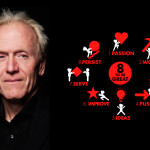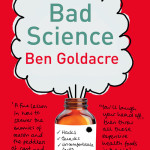Caffeine. Candy. Sex. Shopping. Smoking.
Whether we realize it or not, all of us have strategies for self-medicating ourselves when we feel threatened or overwhelmed by tension or tiredness.
But why does one person respond to pressure by going for a five-mile run, while another indulges in a five-hour drinking marathon?
Why do some of us crave companionship, while others just want to be alone?
And what really helps most to reduce tension and increase energy, a brisk ten-minute walk, twenty minutes of meditation, or two hours of watching TV?
In this fascinating new book, nationally known psychologist Robert E. Thayer serves as an expert guide through the latest research into moods and mood management, offering proven techniques for putting today’s most important breakthroughs to work in our day-to-day lives.
Thayer, whose own work on the biopsychology of moods has been widely discussed in the leading scientific journals–as well as in the pages of Reader’s Digest, Prevention, USA Today, McCall’s, Good Housekeeping, Men’s Health, Redbook, and hundreds of other magazines and newspapers, and on the popular radio show “The Osgood File”–evaluates the hard scientific evidence as he reveals which behaviors energize and empower us, and which sabotage our best interests.
(Just five or ten minutes of walking, for example, can enhance mood for an hour or more, while sugar snacking, Thayer shows, causes more tension than it reduces.)
Thayer argues that when we learn to see moods as vital barometers of our whole psychology and physiology, rather than mysterious, purely emotional reactions to events around us, we not only understand ourselves better, we have the opportunity to substantially improve our personal effectiveness, both mentally and physically.
Thayer offers compelling evidence that our moods–particularly feelings of energy and tension–are closely tied to the rhythms of our evolutionary past. They are directly affected by our health, the food we eat, the amount of sleep we get, exercise (or lack of it), and the time of day.
We learn why problems seem more serious late at night, and why a simple disagreement with a co-worker or spouse is more apt to turn into an emotional flare-up at certain times of day.
We investigate key differences in the most common ways men and women deal with bad moods, and probe the implications of these findings on our understanding of alcoholism and depression.
Far from a shallow quick-fix book, Everyday Moods: Energy and Tension is an in-depth exploration of the origins and influences of moods that affect us every day of our lives. It brings readers to a new understanding of the underlying biology of their daily cycles of energy and tension, and offers powerful recommendations for breaking self-destructive habits and leading a richer, more enjoyable life. [From: Books.google.com]
A somewhat didactic examination of the biological and psychological bases of normal moods, along with research-based advice on changing bad ones into good ones.
Thayer (Psychology/California State Univ., Long Beach) has his own vocabulary for discussing moods. Assuming the interconnectedness of physical and mental states, he says that two arousal continuums—one ranging from energetic to tired and one from calm to tense—together with the thoughts they influence, produce what we call moods. The optimal mood is one of calm-energy; calm-tiredness and tense-energy are less good; tense-tiredness is distinctly bad. The author examines the intricate ways in which these continuums interact with each other; biological influences on mood, such as exercise and food (for instance, he found that sugary snacks increase tension); the congruence between our thoughts and moods (positive thoughts accompany positive moods, etc.); and the effects of such factors as drugs, sunlight, social interactions, and life events. Neurochemistry, physiology, and anatomy are touched on lightly, but Thayer notes that research has far to go in discovering just how these relate to mood. Through self-observation, he says, one can discover one’s daily rhythms of energy and predict the likely times of vulnerability to tension. Mood regulation to Thayer is a matter of matching one’s activities to one’s naturally occurring moods. In focusing on methods people use to alter their moods, he notes that exercise is the most effective way both to raise energy and to reduce tension.
Although Thayer seems to be trying to reach a broad audience by putting discussions of methodology and various technical issues in back-of-the-book notes, his classroom style diminishes this work’s appeal for the general reader. [A Review from Kirkusreviews.com]
If you like this story, CLICK HERE to join the tribe of success-minded people just like you. You will love our weekly quick summaries of top stories, talks, books, movies, music and more with handy downloadable guides, cheat sheets, cliffs notes and quote books.
And, you can opt-out at any time – no strings, promise… CLICK HERE




















